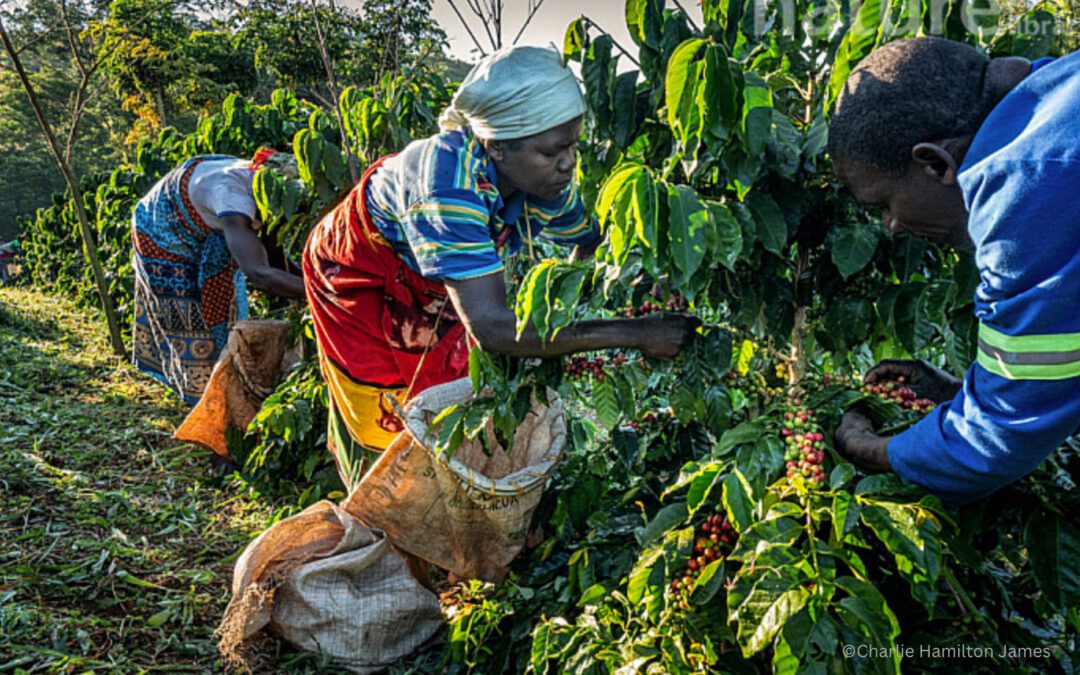When someone drinks a cup of Gorongosa coffee, they are not just drinking coffee—they’re supporting a community.
One hundred percent of the profits from the cultivation and processing of Gorongosa Coffee goes directly back to local communities and helps support sustainable, forest-friendly incomes. Over 200 hectares of land are dedicated to coffee cultivation, and local farmers have planted over a million coffee plants, turning a once-untapped resource into a source of income and rain forest restoration.
In 2023, Manuel Isaías Manejo was named as Our Gorongosa Coffee’s Top Producer, earning over MT152,000 for his exceptional crop. That same year, the Gorongosa coffee project exported nine tons of green coffee to South Africa and the UK, while local farmers sold more than 120 tons of coffee cherries, making A Nossa Gorongosa one of Mozambique’s top national coffee brands.
Gorongosa Coffee and the World
The Our Gorongosa Coffee operation purchased more than 120 tons of coffee ‘cherries’ from local coffee farmers and exported nine tons of green coffee to the South African and UK markets in 2023. Today, the ‘A Nossa Gorongosa’ brand is one of only six national brands to reach the standard required to export coffee.
Africa produces about 12% of the world’s coffee supply, with much of it coming from East Africa. Mozambique is a member of the International Coffee Organization (ICO), which recently reported Africa’s coffee exports grew by 34.7% in July 2024 compared to 2023, reaching 1.9 million bags. This growth underscores the rising influence of African coffee on the world stage.
And yet, coffee’s roots in Africa go back even further. Legend has it that an Ethiopian goat herder named Kaldi discovered the magic of coffee about a millennium ago. After his goats ate mysterious berries and stayed up all night, Kaldi shared the discovery with local monks, who used it to stay alert through long prayers. From there, the drink spread across the world and became the third-most-consumed beverage globally—surpassed only by water and tea.
Fun coffee facts
Coffee isn’t actually a bean. It’s a fruit and before it became a drink, it was eaten as a food staple. The beans ground and processed into coffee by the Gorongosa Coffee team come from the center of coffee cherries, small red fruits that grow on coffee bushes. East African tribes used to grind the cherries and mix them with animal fat to create a kind of energy ball.
Coffee hasn’t always been the universally loved beverage it is today. In the 18th century, some governments tried to ban coffee, fearing that its stimulating effects could promote radical thinking. Sweden went so far as to ban not only coffee but also anything related to it, including cups and saucers.
Coffee even has a special connection with bees. The caffeine in coffee flowers boosts bees’ memory and learning abilities, helping them find more flowers. Just like humans, bees get a little buzz from caffeine, making them more efficient at their job.
